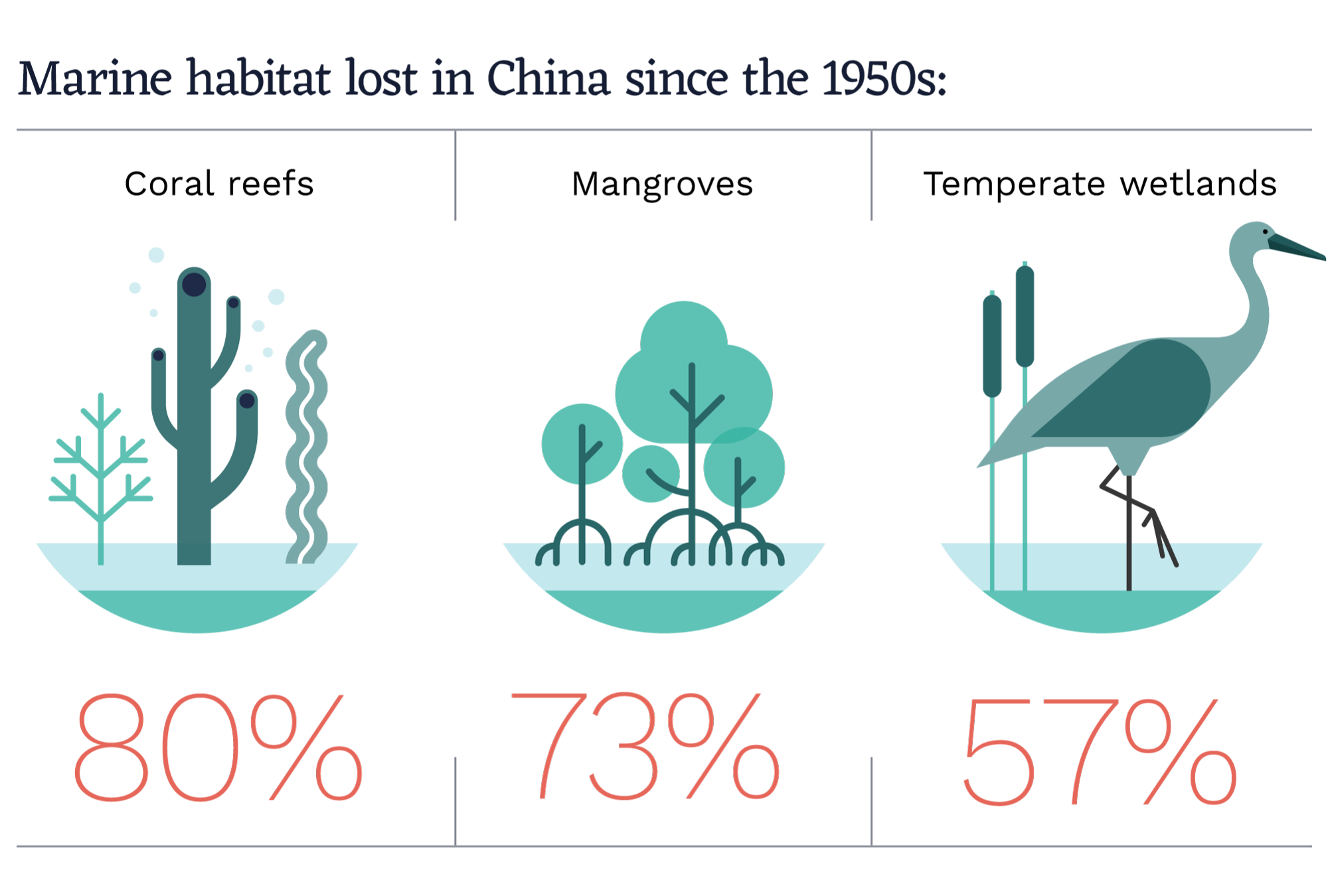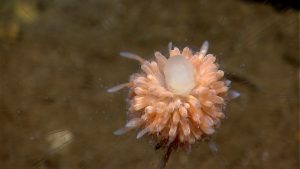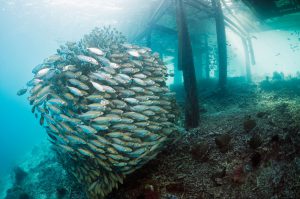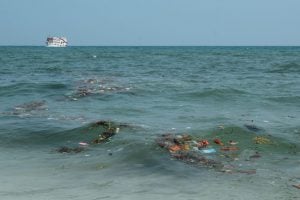Over the last 20 or so years, the world has experienced three severe coral bleaching events caused by unusually high water temperatures, in 1998, 2010 and 2014–17. The latter was the longest, most widespread and destructive such event on record.
Bleaching usually occurs when coastal waters exceed their typical maximum temperature, and corals begin to expel their symbiotic microalgae, without which they will eventually starve. Although China’s corals are unlikely to have escaped harm, very little research into bleaching has been carried out in the country. And there’s long been a lack of a comprehensive overview of the state of China’s corals. Things are now beginning to change.
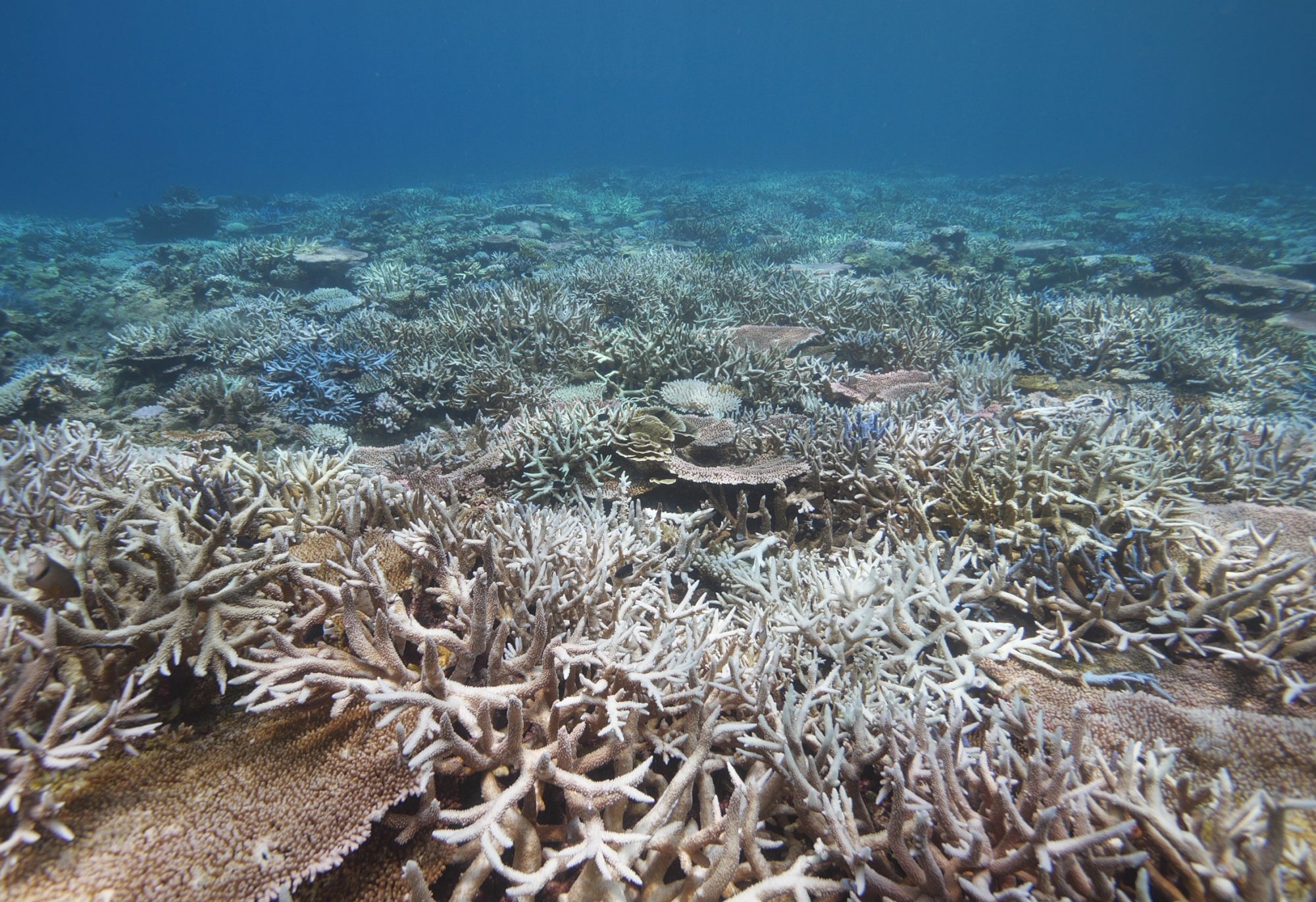
China started researching its coral reefs in the 1950s, but only a few institutions and scientists were involved, with little overall planning or funding. The scope and continuity of research were therefore limited. The year 2005 saw the launch of the largest survey of China’s coastal waters – the 908 Project. Since then, better coastal management and protection has led to more robust coral reef conservation and research. There are now coral research and monitoring teams at the Chinese Academy of Sciences, the Ministry of Natural Resources, as well as some universities. NGOs have also been getting involved.
In late 2018, various bodies and individuals formed a coral reef branch under the Pacific Society of China. Then, in September last year, this branch published the 2019 China Coral Report on the distribution and condition of the country’s coral reefs. The review was not produced by an official body, and was based on disparate data and research only up to 2018. Nonetheless, it is the broadest and clearest window onto the condition of China’s reefs so far produced.
The report shares some good news: in many cases, harmful human activities such as aquaculture, marine pollution and coral mining are on the decline. But there is also bad news: China’s sea temperatures are rising and populations of coral-eating starfish are booming. No easy remedies to these issues have so far been identified.
In another recent report, the UN Environment Programme suggests climate change may make bleaching incidents like that of 2014–17 the norm. Research has found climate change and pollution could cause the loss of 70-90% of all the world’s coral reefs over the next two decades. China may act as a refuge for coral species as they migrate away from warming waters, so research done here is vital for global coral conservation.
To find out more about the current state of coral research and conservation in China, we interviewed Lian Jiansheng, one of the main contributors to the 2019 China Coral Report, and a deputy researcher at the Chinese Academy of Sciences’ South China Sea Institute of Oceanology (SCSIO).
China Dialogue: What threats do China’s coral reefs currently face?
Lian Jiansheng: The biggest threat has always been human activity. Coastal development, industry, sewage, aquaculture – all these influence water quality or even destroy coral habitats. Fishing activity, overfishing and coral mining also cause serious damage to coral ecologies.
There are growing threats too from bleaching caused by climate change, and outbreaks of predatory starfish. Add these to the impact of human activity and the outlook is far from hopeful.
The first time I saw an outbreak of the crown-of-thorns starfish [Acanthaster planci] was in 2003, in Sanya’s Yalong Bay [in Hainan]. It was incredible: huge expanses of living coral had been eaten, leaving only their dead white skeletons. Back then the bay was still hard to get to. It formed part of China’s first national coral reserve, founded in 1990. The coral there was the best in Sanya. But by 2004, almost all the coral in the bay was dead. Then the starfish started attacking coral in the nearby bays of Xiaodonghai and Dadonghai; those bays still haven’t fully recovered. Between 2007 and 2009, almost all the coral around the Xisha islands was eaten by a plague of crown-of-thorns; the reefs there have only partially recovered. Over the past three years, there have been even more localised outbreaks of the starfish on coral reefs in the South China Sea – off the Xisha, Nansha and Zhongsha islands. We need to watch that situation closely.
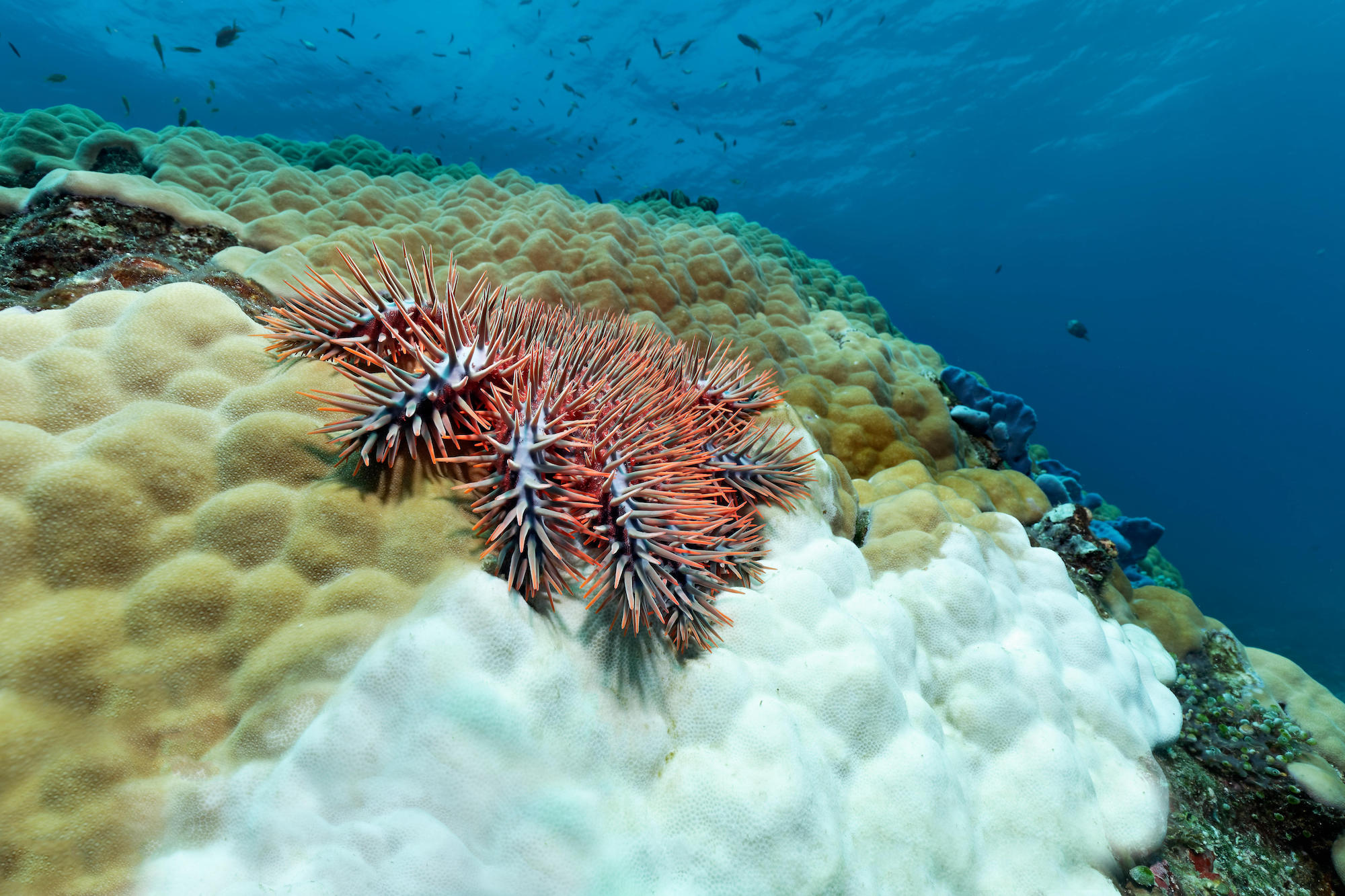
It’s hard to say why coral reefs are so slow to recover. There are probably a number of factors. As for the starfish, a generally accepted cause of their population explosions is excess nutrients in the water, which increases the amount of algae available for their larvae to eat. [Ed: These nutrients reach coastal waters as run-off from intensively fertilised farmland, as well as industrial and domestic wastewater.] Also, overfishing has reduced populations of the natural enemies of the crown-of-thorns starfish, such as the conch and the humphead wrasse. And these starfish work like locusts – once they have eaten one location bare, they move on.
Coral bleaching is becoming more frequent. The 2010 bleaching event was not too serious and mainly affected mid-sized reefs in the Indian Ocean and Western Pacific, as well as off Sanya, and the Xisha and Nansha islands.
The 2014–17 bleaching was perhaps the biggest ever, and China saw severe bleaching in both Nansha and Xisha; 2019–20 was also bad, with 2020 seeing extensive bleaching around the Xisha and Nansha islands; Weizhou island in the Beibu Gulf; as well as off Lingao in northwest Hainan.
China currently doesn’t monitor bleaching. So we call on researchers and amateurs to join forces to carry out long-term monitoring of both bleaching and crown-of-thorns starfish populations.
What can be done about coral bleaching?
There’s no good solution at the moment. In the long term we have to rely on the ability of the organisms themselves to adapt. Most bleaching can be reversed, but sustained high or low temperatures can kill off the coral. Many coral researchers around the world would like to find solutions, and some scientists are looking into engineering. One approach might be “manmade upwelling”. There are natural upwells along China’s coast from Fujian to Hainan, so those regions could provide a refuge for coral, as deeper water is cooler. Creating artificial upwells – possibly by pumping gases down to lower levels and allowing the bubbles to drag cooler water upwards – could help lower temperatures.
The report mentions reductions in the impact of aquaculture and coastal construction in some areas. Will these be sustained?
Those changes are due to stronger environmental inspections from central government, part of an overall policy to focus on environmental protection. But inspections aren’t permanent. We’d like to see more sustained mechanisms, with the state coordinating coral protection nationwide. That could include regular and much broader monitoring, early warning systems, the designation of reef-building corals as Class II protected animals [Ed: the National Forestry and Grassland Administration did the latter on 5 February], better law enforcement and reef management.
In December 2019, the Ministry of Agriculture published an action plan for coral reef protection. It included a target for over 90% of key coral reef areas to be protected by 2030, as well as for a small increase in the extent of living reef corals and an improvement in coral health. What do we need to do to achieve those goals?
Currently, research bodies studying coral reefs are working on a project-by-project basis. There’s no overall coordination. There’s a lot of work to be done at the local level, as many coral reefs are close to areas of human activity. There’s also a lot of coral within nature reserves, but those reserves may not be able to ensure protection – staff don’t have the necessary powers to arrest or fine people, so there’s a lot to be done on enforcement and management.
That action plan should take global biodiversity targets into account, as well as the reserve system China is currently establishing, for example by calling for reserves to be set up or given higher status. I hope the plan will bolster work done at the national level in terms of overall coordination. There’s also a very urgent need for long-term monitoring of bleaching and crown-of-thorns starfish. I’d hope to see more national and local funding for that.

What is the significance of the 2019 China Coral Report?
It’s hugely significant for coral research in China. It’s the first broad and systematic look at the state of the country’s coral reefs.
There have been several English-language reports on the subject. In 2004, a coral research team from SCSIO joined the Global Coral Research and Monitoring Network (GCRMN), and it publishes a report every four years.
But those reports are in English, and the sections on China just look at a few representative regions, such as Dongshan in Fujian; Daya Bay and Xuwen in Guangdong; and Sanya and Xisha in Hainan. They don’t offer a nationwide overview. Most importantly, that work is by the SCSIO’s coral reefs group only. The 2019 coral report includes research by over a dozen institutions – it’s China’s first genuinely national report.
When did monitoring of China’s coral reefs start?
SCSIO has been a key part of China’s coral research since the 1950s. More systematic monitoring by a coral sciences team started in 2002, and we joined the GCRMN in 2004. That monitoring and action network grew out of the Convention on Biological Diversity, and its East Asia region covers Mainland China, Taiwan and Hong Kong.
What level is China’s research at internationally?
Around the world, monitoring is usually done by divers. Remote monitoring [using various technologies including satellites] has become more common in recent years too. China’s methods have been in line with international practice since 2004, and overall, our research keeps up with that of other countries. We’re quite good, and in some aspects take the lead, when it comes to restoring coral ecologies [such as by coral planting]. Central government inspections into restoration efforts by local authorities have helped sustained progress be made.
What prompted the writing of the report? And why are coral reef ecologies now of more interest?
The report came about after the 2018 founding of the Coral Reef Branch of the China Pacific Society. The branch is an NGO formed of institutions and individuals concerned about coral reefs, founded at SCSIO. It has over 100 members, including universities, research institutions, NGOs and individuals. The Coral Reef Branch enabled the planning of the report.
Funding came mainly from foundations, with the content derived from existing research by members. Only representative areas had been covered in that research, and so the report lacks continuity across time and space – something that needs improvement.
Getting the report completed was a lot of hard work. And while it might not have been a government-led project, it has led to more government attention being paid to coral reefs. Prior to 2005, China hadn’t carried out any overall survey of reefs. Research bodies were more focused on geology. Apart from Zou Renlin at SCSIO, there were very few researchers looking at coral reef ecologies. But in 2005 the first specific survey of coral reefs began – the 908 Project. After that, more attention was paid to reefs, and the data used in our 2019 report is drawn mainly from research carried out since then.
The number of research bodies and NGOs working in the field has been growing. The Guangxi University Coral Reef Research Centre, which contributed to the report, was founded in 2014. Diving charities Dive4love and Better Blue, both less than a decade old, work on coral reef conservation. And there is more government funding for surveys and research than before.
The South China Sea office of the National Forestry and Grassland Administration carries out regular monitoring of natural resources, but did not originally cover coral reefs. It now does, meaning better continuity of monitoring.

